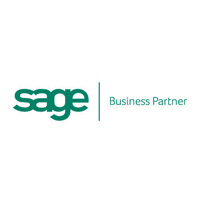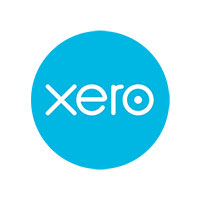 Preparing for the tax year end – planning with the family
Preparing for the tax year end – planning with the family
We are rapidly approaching the end of another tax year. If you have not already done so this is the time to review your financial and tax affairs and consider if any action needs to be taken by 5 April 2020.
In this and the next few articles we outline a few areas for consideration. In this article we consider some areas for planning within the family.
A family view
In the UK, everyone is taxed as an individual, but social security benefits, including Tax Credits and Universal Credit, are awarded on the basis of the family’s total income. Child Benefit is withdrawn based on the income of the higher earner in a couple, irrespective of who receives it.
Families with an unequal distribution of income will often pay more tax than couples who earn just enough each to cover their basic Personal Allowance (£12,500 for 2019/20) and the basic rate band. The thresholds for restricting Child Benefit (£50,000), Personal Allowance (£100,000) and Pension Annual Allowance (£150,000) all operate for the individual, so disadvantage families where the income is concentrated in one person’s hands.
Consider the Browns – they have two children and claim Child Benefit. In 2019/20 George Brown earns £90,000 and pays higher rate tax, but Sally Brown has no income. Because George’s income is over £60,000, the family’s Child Benefit is clawed back from him as a tax charge.
In contrast, John and Joy Green each earn £45,000, so they keep their Child Benefit and pay less Income Tax as their highest marginal tax rate is 20%. Both Greens make use of their full Personal Allowance and most of their basic rate band.
Roger and Rose are in a worse tax position. Roger’s total income is £160,000 and his employer contributes £40,000 into his pension scheme. Roger and Rose have no effective Personal Allowances, as Rose has no income to set her allowance against, and Roger’s Personal Allowance is entirely withdrawn because his income exceeds £125,000.
Roger is treated as having income of £200,000 (£160,000 + 40,000) for pension relief purposes. His pension annual allowance is therefore reduced to £15,000, so he suffers an annual allowance charge at 45% on £25,000 of pension contribution.
These examples show that families can save tax if they transfer some income from the higher earner to the lower earner in order to take advantage of the Personal Allowance or lower tax bands, and to avoid the clawback of allowances. This is not always easy to do, but the following methods are permissible:
- make an outright gift of investments which produce taxable income
- put savings and investments into joint names and share the income
- employ the spouse or partner in the other person’s business
- take the spouse or partner into partnership in that business
HMRC can challenge some of these methods if they think the transfer is not genuine – always take tax advice to be sure that your plan will work.
Tipping points
When your total income reaches certain thresholds, it tips any extra income into a tax band where a higher rate of tax is charged. This can also mean you lose part or all of your Savings Allowance, Child Benefit, Personal Allowance, or Pensions Annual Allowance.
Say you are a 20% taxpayer in 2019/20, but expect that a bonus due in March 2020 will tip you into the 40% band (over £50,000). If you ask your employer to delay paying the bonus until after 5 April 2020, you’ll pay the tax on that income later. You should also retain all your £1,000 Savings Allowance, and may still stay out of the 40% band for 2020/21. The 40% threshold for 2020/21 is £50,000.The main thresholds for 2019/20 are:
- basic Personal Allowance: £12,500 – basic rate tax (20%) starts
- higher rate threshold: £50,000 – 20% rate increases to 40% and Savings Allowance reduces from £1,000 to £500
- married couple’s allowance: transfer of 10% of Personal Allowance is possible where the higher earner has income of no more than £50,000
- Child Benefit clawback: income between £50,000 and £60,000
- withdrawal of Personal Allowance: income between £100,000 and £125,000
- additional rate: income above £150,000 – 40% rate increases to 45%, Savings Allowance removed, and pension annual allowance reduced
Income that can easily be moved from year to year includes:
- bonus from your own company
- dividends from your company
- encashments of life assurance bonds
- withdrawal of taxable income from pension schemes in ‘drawdown’.
Your clear intention
When you die, your executors or relatives need to sort out your affairs. This stressful task can be made easier if you leave a clear and up-to-date Will which has been drafted with tax in mind.
They may also need to pay Inheritance Tax (IHT) if the net value of your assets, including your home and any insurance policies that pay out to your estate on death, exceeds £325,000. The IHT rate above this threshold is 40%, or 36% if at least 10% of your net estate has been left to charity.
The IHT tax threshold is expanded by up to £150,000 if you leave the value of your home to one or more of your direct descendants. If that is your wish, your Will must be clear about who receives the value of your home. This home-related tax exemption will increase to £175,000 for deaths on and after 6 April 2020.
There are other ways to reduce the IHT payable on death, such as:
- use your annual IHT allowance of £3,000 to make gifts from your capital or savings; if you didn’t use this allowance in 2018/19 you can give away up to £6,000 in 2019/20
- make other gifts to individuals as early as possible, as they will fall out of the IHT calculation if you survive seven years after the date of the gift (but be careful not to trigger CGT charges on the gifts)
- make regular gifts out of your surplus income rather than out of accumulated income or capital – those lifetime gifts may escape IHT
- ensure that proceeds from your life assurance policies flow directly to a beneficiary – if the money lands in your estate on your death, this could trigger an IHT charge
- inform your pension fund managers of whom you wish to receive any undrawn funds by way of a wishes letter – such funds can be free of IHT if you die aged under 75
Please contact Vinnie Rome or Nick Luck if you would like to discuss any of the tax planning points covered in this series; on 01689 877081 or complete our online form.
Registered as Auditors in the United Kingdom by the Association of Chartered Certified Accountants.




